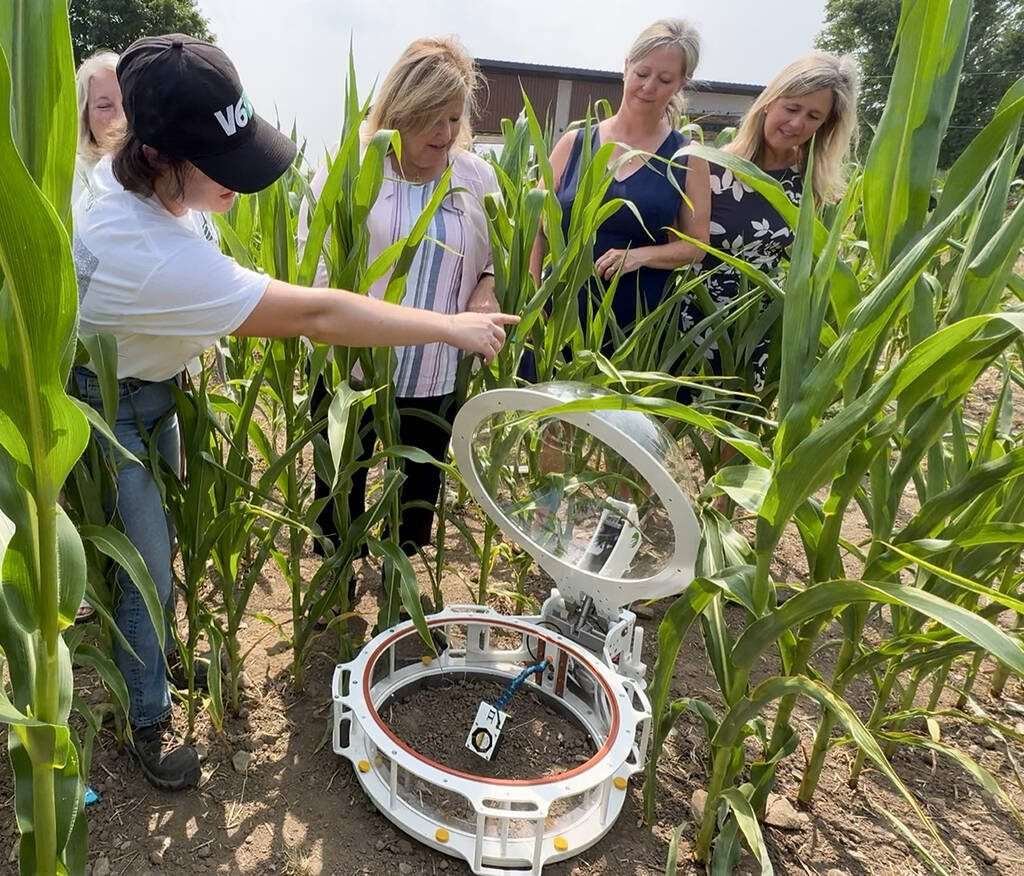Trent University’s Farm Research Centre opened its drive shed doors by honouring the past while focusing on the future of agriculture.
Dr. Holger Hintelmann, Trent University’s vice president of Research and Innovation, said the Trent Farm Research Centre and Lightbody Drive Shed is a crucial initial step in evolving Trent University’s 36-acre farm expansion into a dynamic space “for research, education, and community collaboration .”
Why it matters: Established in 2014, the expansion of Trent Farm enhances long-term research applications that support food production and provide hands-on experiential learning.
“Faculty from many disciplines are working here alongside projects that explore things like soil remediation, fertilizer innovation, carbon capture and local weather monitoring,” said Hintelmann. “Students are gaining real first-hand experience, literally field experience, designing experiments supporting indigenous food security and contributing to more inclusive and resilient food systems.”
Dr. Karen Thompson, the Centre’s director and associate professor at Trent School of the Environment, said that as a living lab, the farm focuses on adaptive management and agriculture in response to changing weather patterns, climate, policies, and evolving resource demand and supply.
The school is collaborating with V6 Agronomy, Ontario Soil and Crop Improvement Association (OSCIA) and the Natural Sciences and Engineering Research Council (NSERC) to explore Canadian-sourced alternative nutrient solutions that support crop productivity while reducing greenhouse gas emissions.

“We have a number of different projects centred on the idea of soil carbon sequestration, so looking at how we can get carbon into the soil and keep it there, both through the use of regenerative practices,” she said. “We are also supporting a project looking at enhanced rock weathering this year.”
The project focuses on rock weathering Wollastonite, a calcium- and magnesium-rich silicate mineral, as a soil amendment to sequester CO2 and improve fertility and nutrient availability, ultimately leading to higher yields in partnership with OSCIA and NSERC.
The Canadian agri-food sector is negotiating a generational shift, where many farmers are retiring without succession options, let alone a plan, explained Thompson.
“It’s really vital to try and equip the next generation,” she said. “Many of whom are first-generation practitioners and farmers, with the knowledge and skills that they need to confidently step into roles related to agricultural production, crop advising, agri-tech and research, as well as, obviously, environmental stewardship.”
Alumni support was integral in making the drive shed and research centre building a reality, as well as providing much-needed support, such as a new well with help from Karen Wickerson and a tractor from Philip White.
The Lightbody Drive Shed, which provides essential workshops, storage and fieldwork space for faculty, students and community collaborators, was named after the late Bob and Margie Lighbody, graduates of Trent’s founding class of 1964. The Lightbodys remained strong advocates and supporters of the school, and after retiring from the city to become “gentlemen farmers,” they learned about agriculture as they went along. Their legacy gift supported the development of the farm space and the signage, which integrates their farm’s barnboard, symbolizing agriculture’s deep ties to the past while striding into the future.
“This new facility builds on more than a decade of research and hands-on learning in sustainable agriculture at Trent,” said Dr. Cathy Bruce, president and vice-chancellor of Trent University. “We are entering a new phase in sustainability research and innovation – positioning Trent to lead in adaptive agriculture practices, soil science, and new carbon capture techniques.”
The post Trent University Farm Research Centre expands agriculture research and training capacity appeared first on Farmtario.














